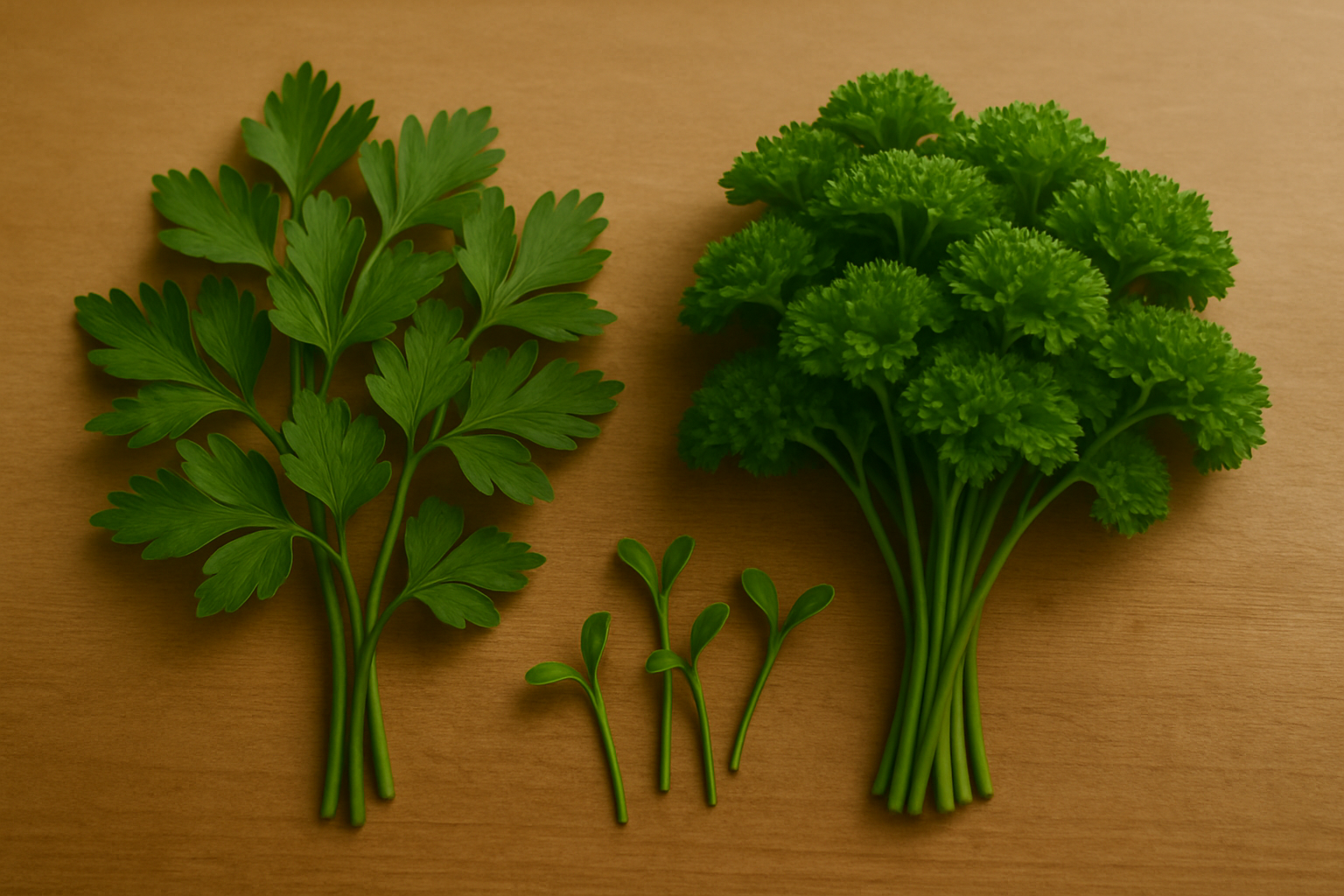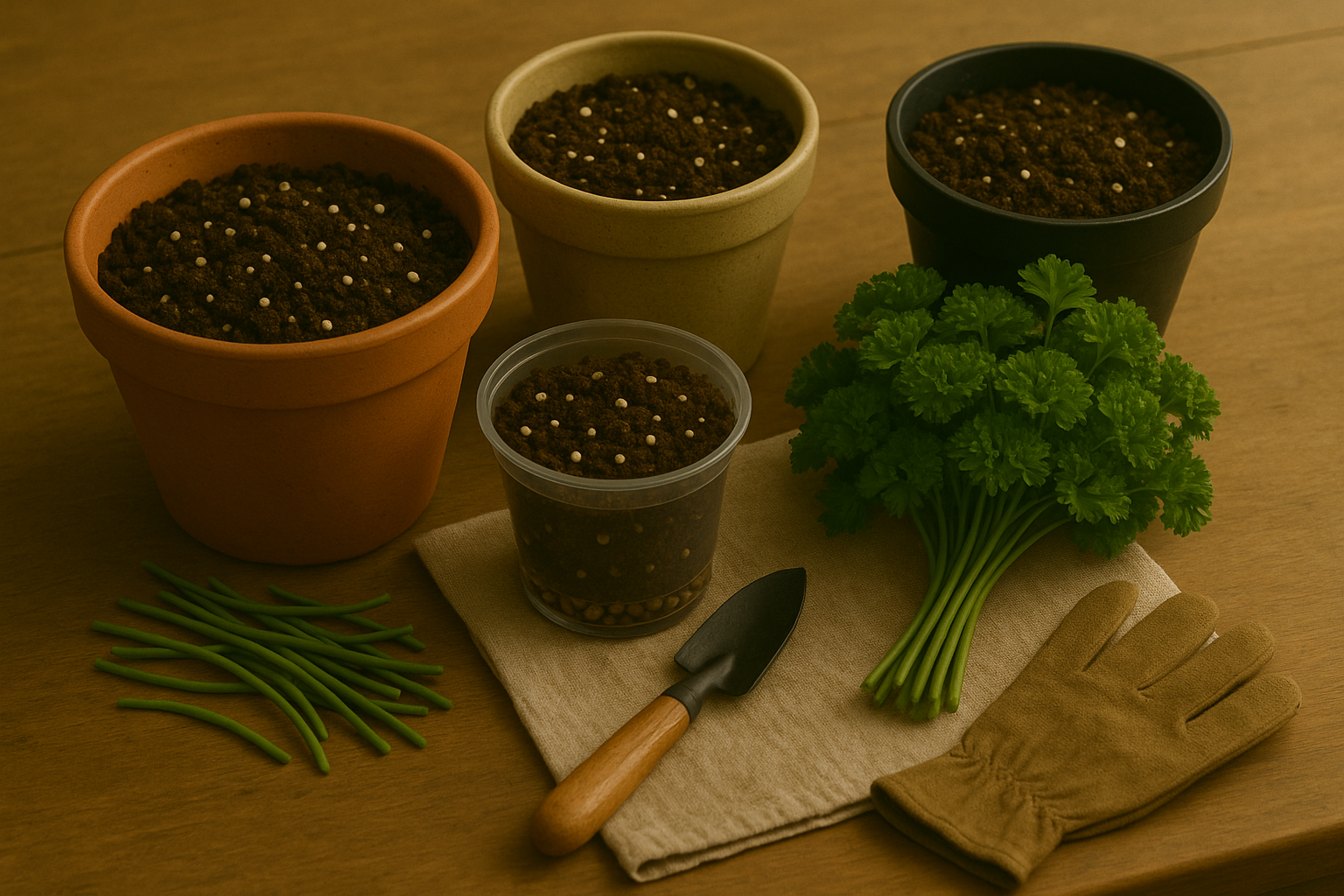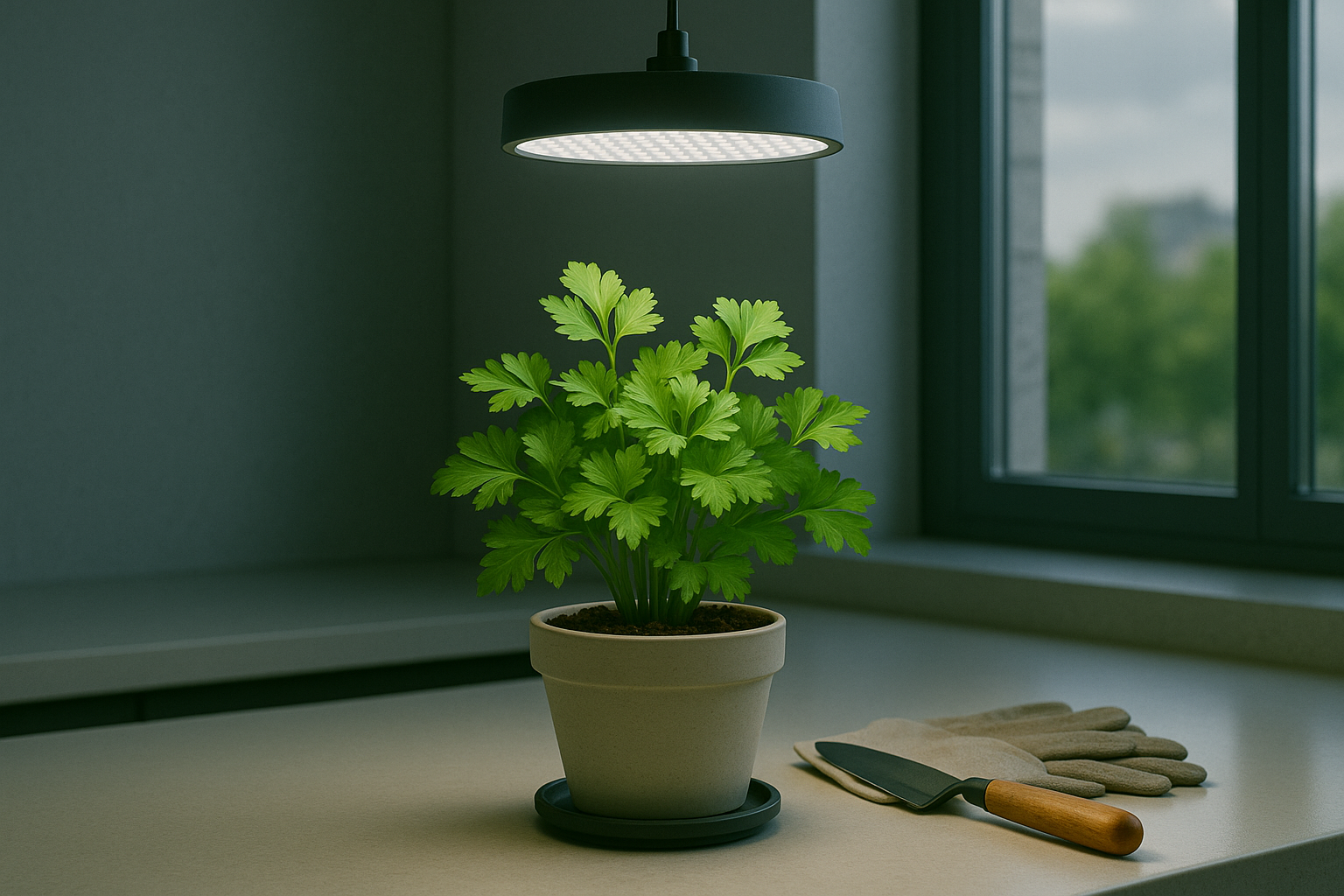Introduction
Growing parsley indoors is an easy way to have fresh, flavorful herbs right at your fingertips, no matter the season. Imagine snipping fragrant green sprigs straight from your kitchen windowsill—perfect for that last-minute garnish or adding a burst of flavor to your favorite dishes.
Besides the obvious benefit of year-round harvests, indoor gardening helps you avoid pests and unpredictable weather that often threaten outdoor plants. Of course, growing parsley indoors comes with a few challenges, like finding the right light, choosing the best pots, and maintaining consistent soil conditions.
Don’t worry—this post will guide you through all the essentials, including picking the perfect spot, selecting the best pots, and practical tips to keep your parsley thriving. By the end, you’ll be ready to turn any sunny corner into an indoor herb haven stocked with fresh parsley on demand.
Choosing the Right Parsley Variety

When choosing parsley for your indoor herb garden, it’s important to understand the key differences between flat-leaf (Italian) and curly varieties. Flat-leaf parsley is known for its stronger, more robust flavor, making it a favorite among chefs for both cooking and garnishing. Curly parsley, on the other hand, has a milder taste and is often used decoratively because of its frilly leaves.
For indoor growth, flat-leaf parsley tends to adapt slightly better since its leaves are less dense, allowing for better airflow and reducing the risk of mold or pests in confined spaces. Both types require similar care—plenty of sunlight (at least six hours a day, or grow lights), regular watering, and well-draining potting mix.
If space is limited, curly parsley might be a better choice as it’s naturally more compact and bushy, fitting well on smaller windowsills or counters. However, if you plan to cook often and want more harvest per plant, flat-leaf parsley grows faster and generally produces larger leaves, making it more practical and flavorful for culinary use.
Whichever you choose, snip leaves frequently to encourage bushier growth and keep your indoor parsley thriving.
Selecting the Ideal Pots and Soil

Choosing the right pots and soil makes all the difference when growing parsley indoors. Aim for containers that are at least 6–8 inches deep so parsley’s roots have room to spread—any smaller, and your plant might struggle.
Choose pots with multiple drainage holes to prevent excess moisture, which can easily lead to root rot. Materials like terra cotta, ceramic, or plastic all work, but terra cotta is a favorite because it “breathes” and helps the soil dry quicker if you tend to overwater.
Always skip garden soil for indoor containers; it’s too dense and can compact, trapping water and introducing pests. Instead, use a light, high-quality potting mix meant for herbs or vegetables—something labeled as loose, fast-draining, and enriched with organic matter.
To make your own blend, mix equal parts potting soil, perlite, and compost for nutrients and aeration. Don’t forget to line the bottom of your pot with a thin layer of small stones or gravel to boost drainage even more, but make sure it doesn’t block the drainage holes.
After watering, always empty the saucer under your pot so parsley roots never sit in water. By focusing on drainage, pot depth, and a soil mix that stays fluffy, you’re setting the stage for healthy, lush indoor parsley.
Providing Optimal Light Indoors

Parsley thrives indoors when given plenty of bright, indirect light—aim for at least 6-8 hours daily for vigorous growth. South-facing windows are often ideal, offering the intensity parsley needs, but east or west windows can work if you keep the plant close to the glass. Watch out for direct afternoon sun, though; it can scorch the leaves, especially during hot summers.
If your windows don’t get enough daylight, especially during short winter days, supplement with full-spectrum LED grow lights. Place the grow light 6-12 inches above the parsley and keep it on for 12-14 hours to mimic the sun’s natural cycle. This extra boost ensures your parsley stays lush rather than leggy and pale.
No matter where you position your plant, rotate the pot every few days. This simple trick encourages even growth and prevents your parsley from leaning dramatically toward the light source.
As the seasons change, light levels shift—a sunny spot in winter may become too intense in summer or vice versa. Check leaf color and shape for clues: pale or stretched stems mean the plant needs more light, while crisped edges could indicate too much. Move your parsley as needed and adjust your grow light’s height or timer to keep the plant healthy year-round. This hands-on approach helps even city gardeners coax the best harvest from their indoor herbs.
Watering, Feeding, and Humidity
Getting the basics of watering, feeding, and humidity right is key to keeping your indoor plants thriving. First, when it comes to watering, consistency matters more than frequency—most plants prefer their soil to dry out slightly between waterings, so always check the top inch of soil before grabbing your watering can. Stick your finger in the soil; if it feels dry, it’s time to water.
Water thoroughly until excess drains from the bottom, but never let your plant sit in standing water, as this can lead to root rot. Underwatering is common if you forget to check soil regularly, while overwatering often results from sticking to a rigid schedule instead of listening to your plants’ needs.
For feeding, a general rule is to fertilize once a month during the growing season (spring and summer) with a balanced, water-soluble fertilizer at half the recommended strength. Avoid fertilizing in winter when most indoor plants are resting. Over-fertilizing can burn roots or cause leaf tip browning, so when in doubt, less is more.
Humidity is often overlooked, but most tropical houseplants prefer a moist environment—aim for 40% to 60% humidity. You can increase humidity by:
- misting leaves,
- grouping plants together, or
- placing a tray of water and pebbles near your plants.
Proper airflow is just as crucial; keep plants away from drafts, but ensure air circulates to prevent mold and pest problems. Smart placement, a small fan, or simply opening a window for a short period can foster healthy airflow and happier plants.
Common Problems and How to Fix Them

Indoor parsley can sometimes fall victim to pests like fungus gnats and aphids, or diseases such as powdery mildew. If you see tiny flies hovering around your soil, you’re likely dealing with fungus gnats—let the soil dry between waterings and consider adding a layer of sand to the surface to deter egg-laying.
Aphids look like tiny green or black dots on leaves and stems; a quick rinse with water or a gentle spray of insecticidal soap can help remove them. Powdery mildew appears as a white, dusty coating on leaves—improve air circulation and avoid overhead watering to keep humidity low.
Yellowing leaves often point to overwatering or lack of nutrients; check the soil moisture and make sure your parsley is getting enough light and diluted fertilizer. If your plant’s growth seems slow, double-check that it’s receiving at least 4-6 hours of sunlight, and consider repotting if roots are crowded.
Leggy, stretched stems are a sign your parsley needs more light—move it closer to a bright window or supplement with a grow light. Regularly pruning back tall stems will encourage bushier, healthier growth, keeping your indoor parsley lush and thriving.
Harvesting and Using Indoor-Grown Parsley
To get the most from your indoor-grown parsley, start harvesting once the stems have at least three segments of leaves, usually around 6-8 weeks after planting. Always snip the outer leaves first, cutting the stem close to the soil with clean scissors—this encourages the plant to send out fresh new growth from the center.
Avoid removing more than one-third of the plant at a time to keep it healthy and productive. For ongoing yields, try a “cut and come again” approach: harvest small amounts regularly, about once a week, which signals the plant to keep producing.
After picking, rinse the parsley gently and wrap it in a damp paper towel before storing it in a plastic bag or airtight container in the refrigerator; this helps keep it fresh for up to a week. You can also freeze parsley by chopping it and packing it into ice cube trays with a bit of water or olive oil for easy use later in soups or sautés.
Fresh parsley is perfect for garnishing dishes like pasta, salads, and roasted vegetables, or blending into pestos and sauces. Regular harvesting, consistent watering, and providing plenty of indirect sunlight can keep your parsley growing strong for several months, giving you fresh herbs on hand whenever you need them.
Conclusion and Quick Tips
Growing parsley indoors is easier than you might think and brings fresh flavor right to your kitchen. We covered choosing the right container, using quality potting soil, and ensuring good sunlight or grow lights. Remember to water regularly but avoid overwatering, and snip leaves often to keep your plant healthy.
If you’re just starting out, try placing your pot on a sunny windowsill and set a reminder to check soil moisture. Have parsley-growing tips or questions? Drop them in the comments—we’d love to hear from you and help your indoor garden thrive!
